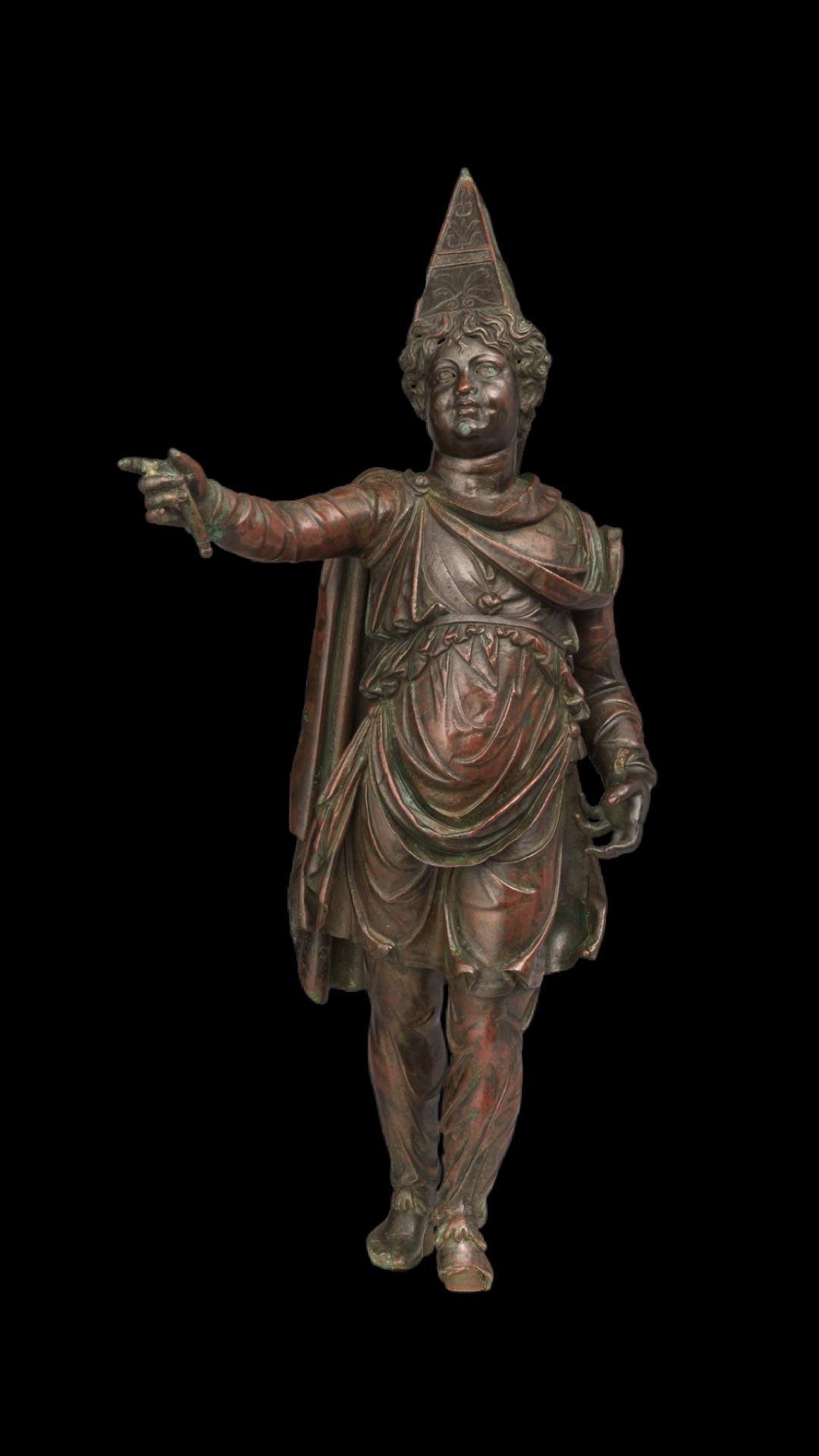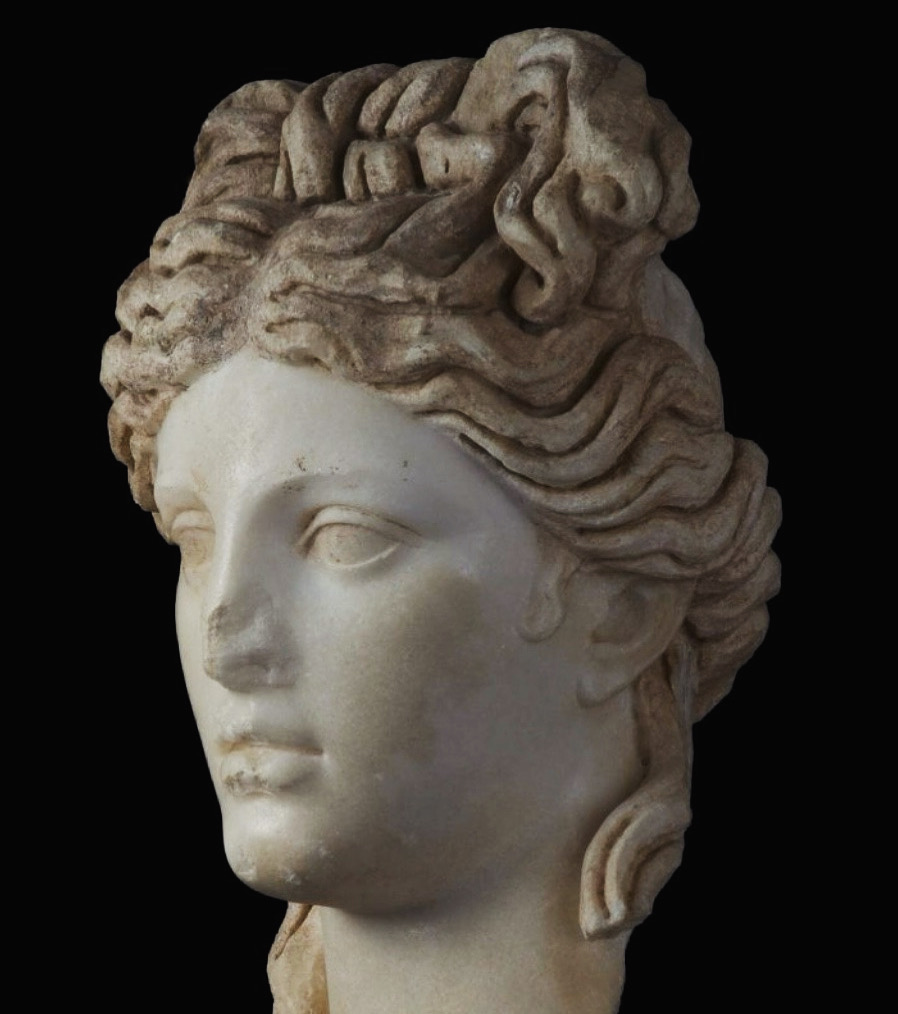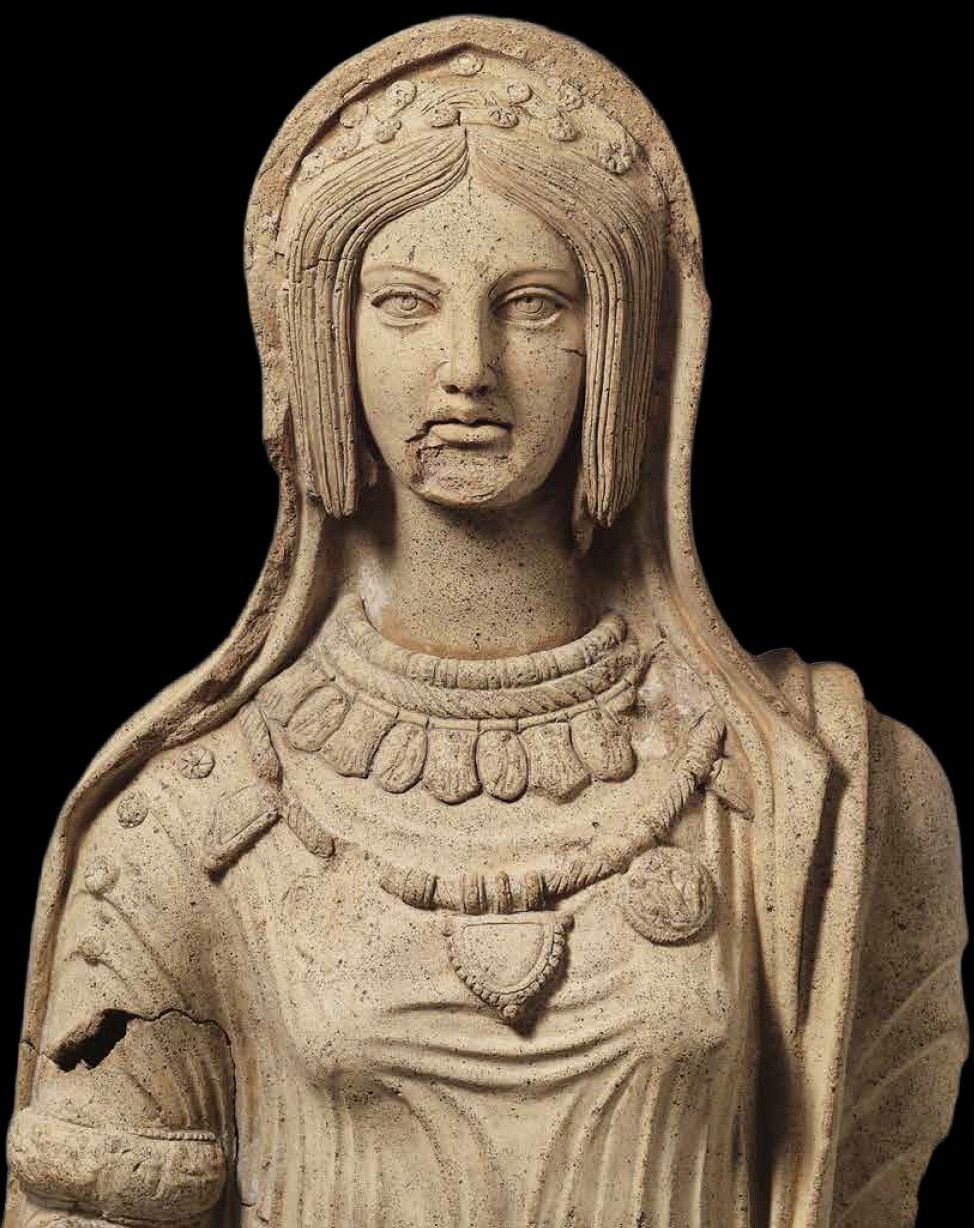This is one of the very greatest examples of diadem from the ancient world. Dubbed the ‘Loeb Diadem’ it currently resides in the Munich Antikensammlung, and said to be from the Pantikapaion (modern Kerch) along the Black Sea. The moniker stems from the first (modern) owner, Dr. James Loeb who acquired it in the early 20th century.
And while there is no Koh-i-Noor, Cullinan, or Black Prince’s Ruby, it is just about as lavish as crowns could be in the Hellenistic world. The main material used is that wondrously deep yellow gold, encrusted with filigree, and applied beads. 9 tassels adorn the front (this can’t have been an easy fashion statement to pull off, as they would have dangled perilously low over the brow), each terminating in brands of gold, garnet, carnelian and sardonyx. The central motif is a luxe ‘Herakles knot’ in garnet, with attendant connotations of strength and protection. The crowning glory (puns always intended) is a winged victory flanked by sea dragons, each individually crafted and soldered on.

The Hellenistic age, was arguably the high point for diadems. Allegedly their history could be traced back to Dionysos, who wound strips of cloth around his head to ward off hangovers (this has never worked for me…). After the conquests of Alexander the Great, with the great wealth flooding from Persia to the Greek world, and the exciting new Hellenistic kings with divine pretences. To whom this masterpiece belonged is alas anyone’s guess – it likely was from a tomb, and geographically it is anyone’s guess, perhaps belonging to an aristocrat of either Greek or Scythian extraction.



